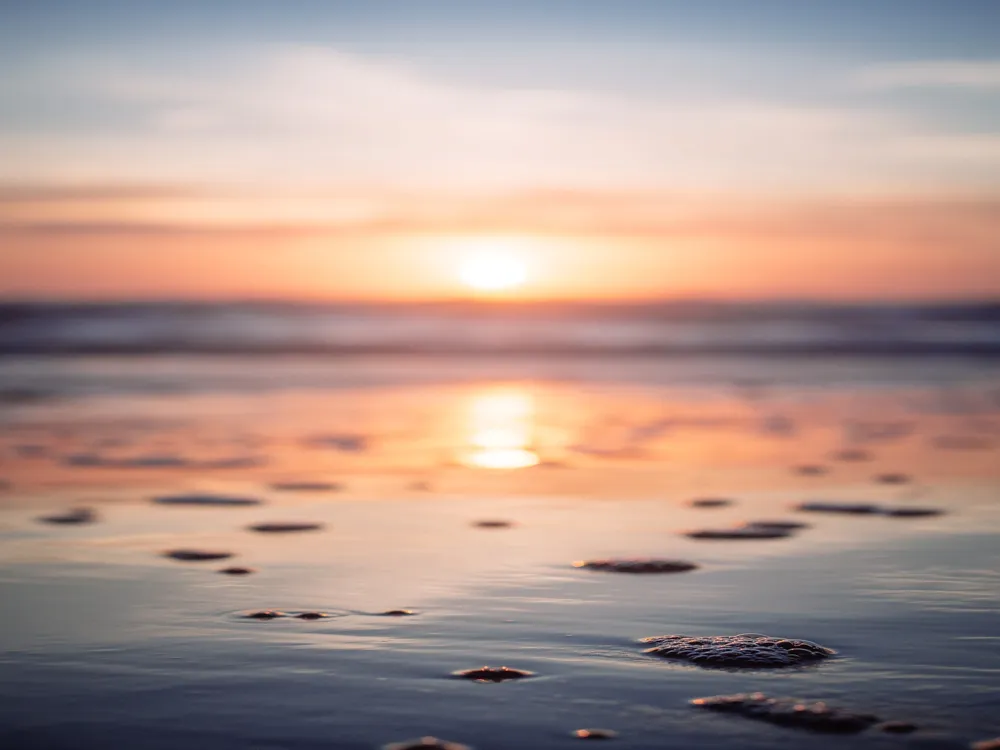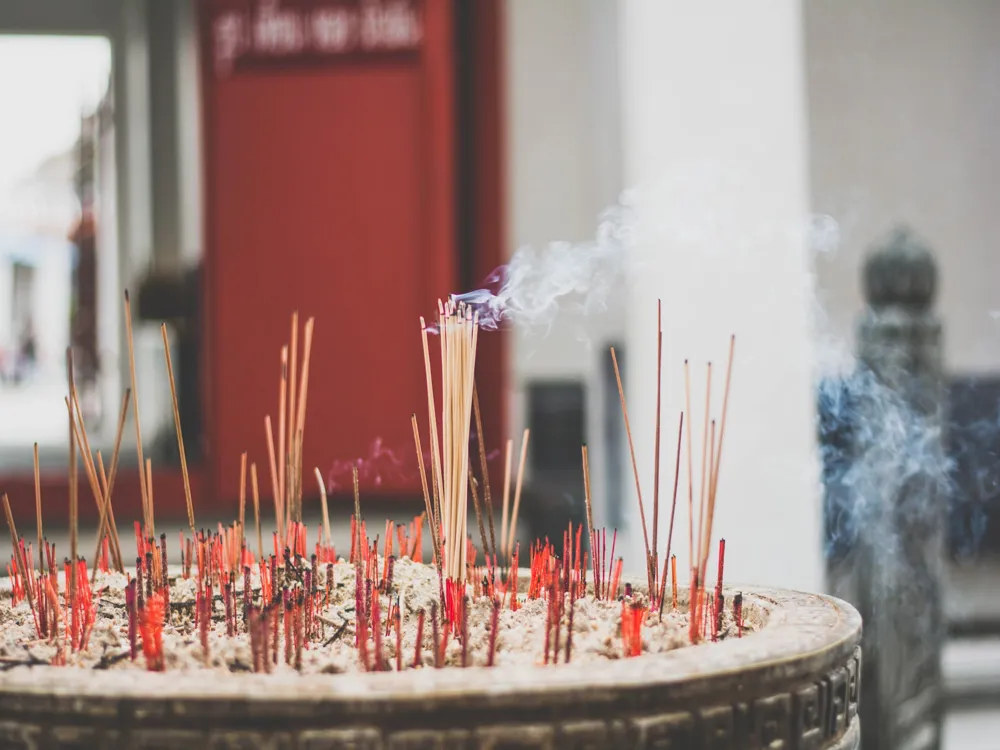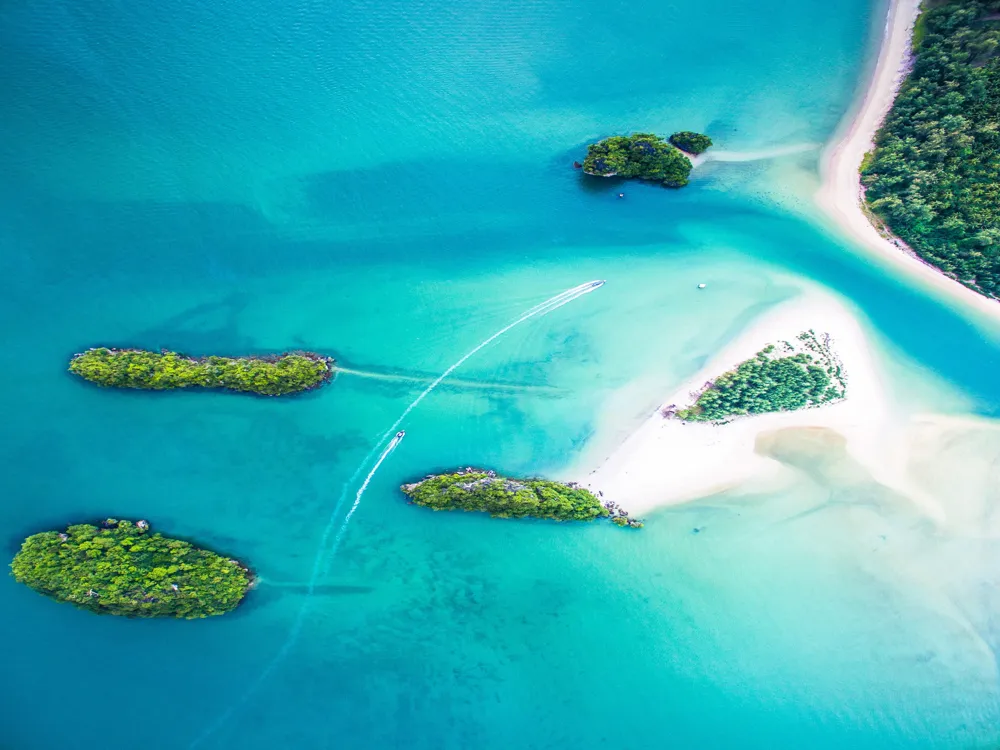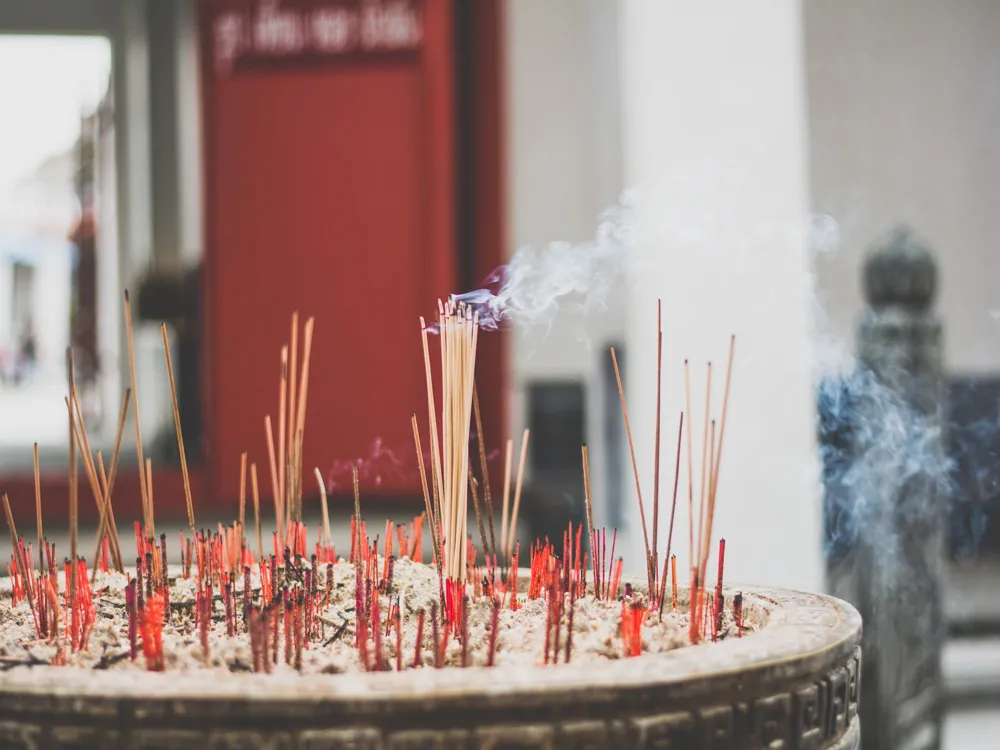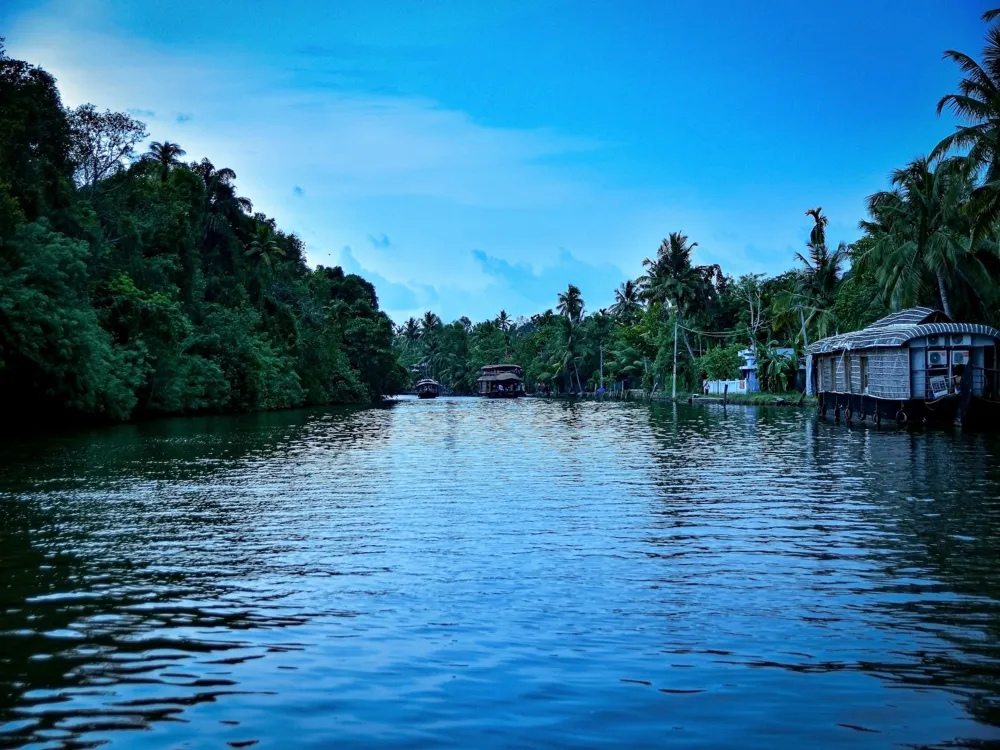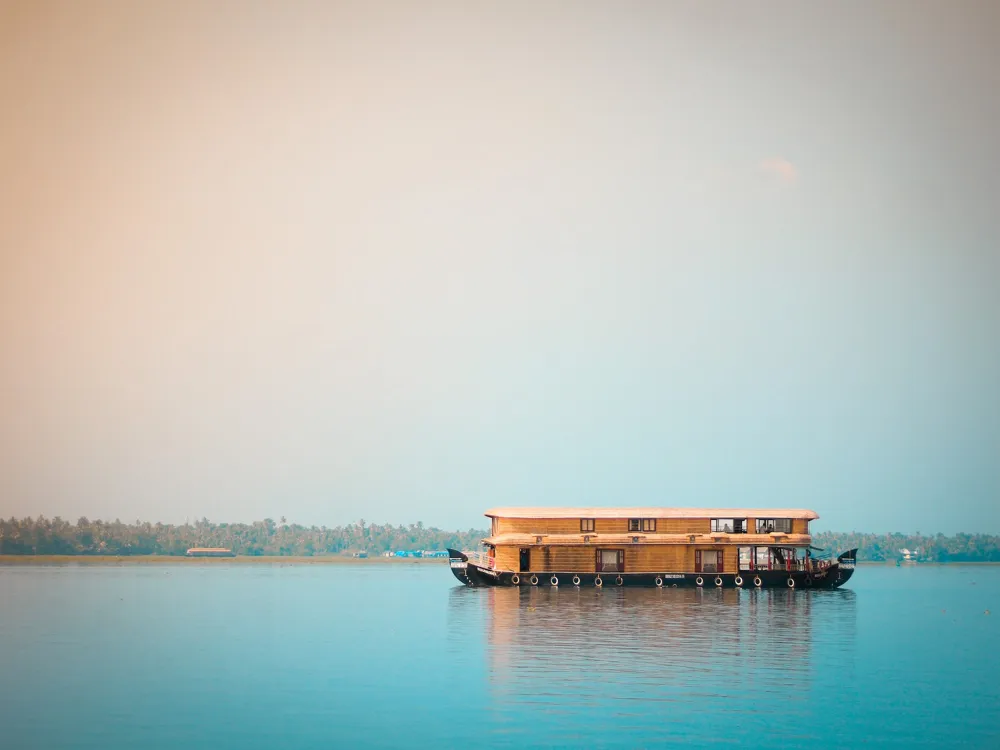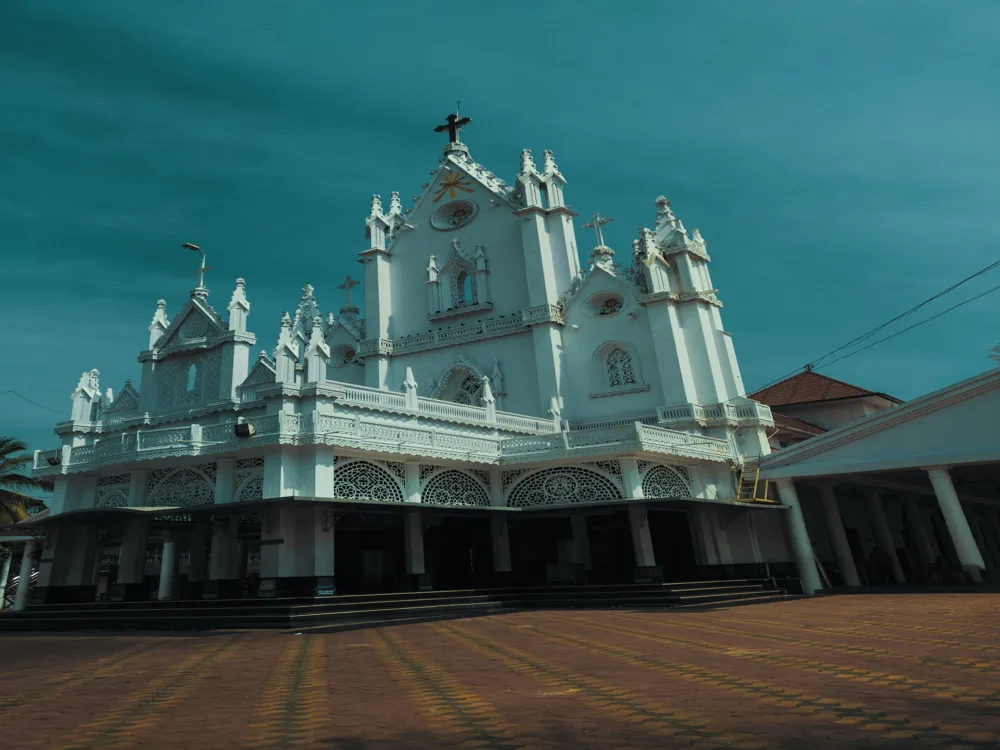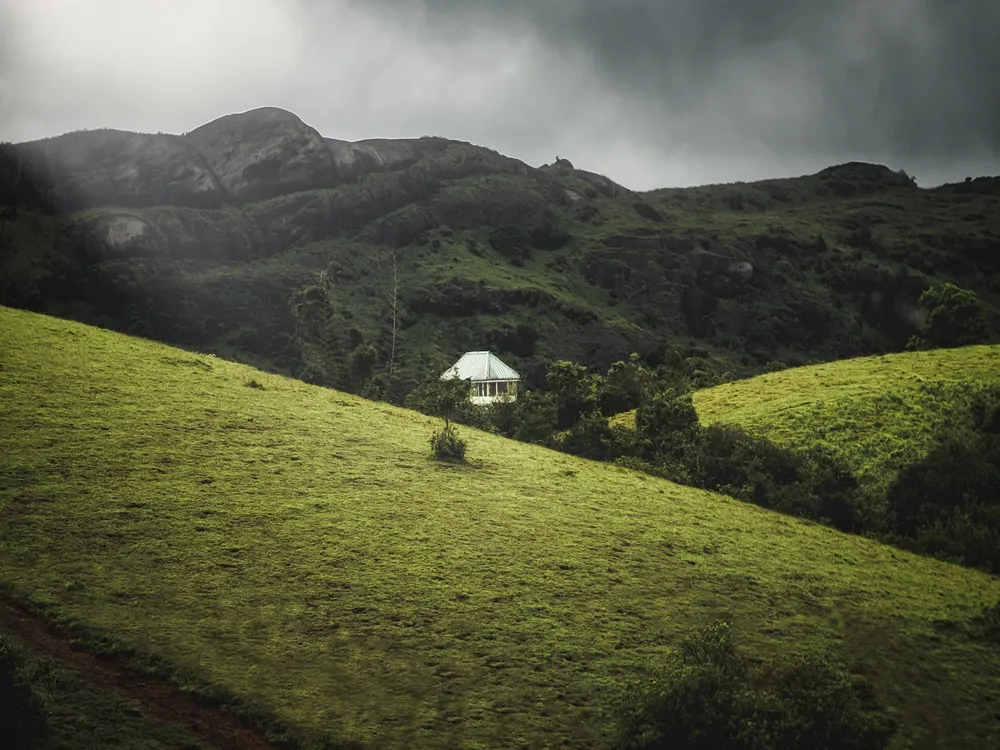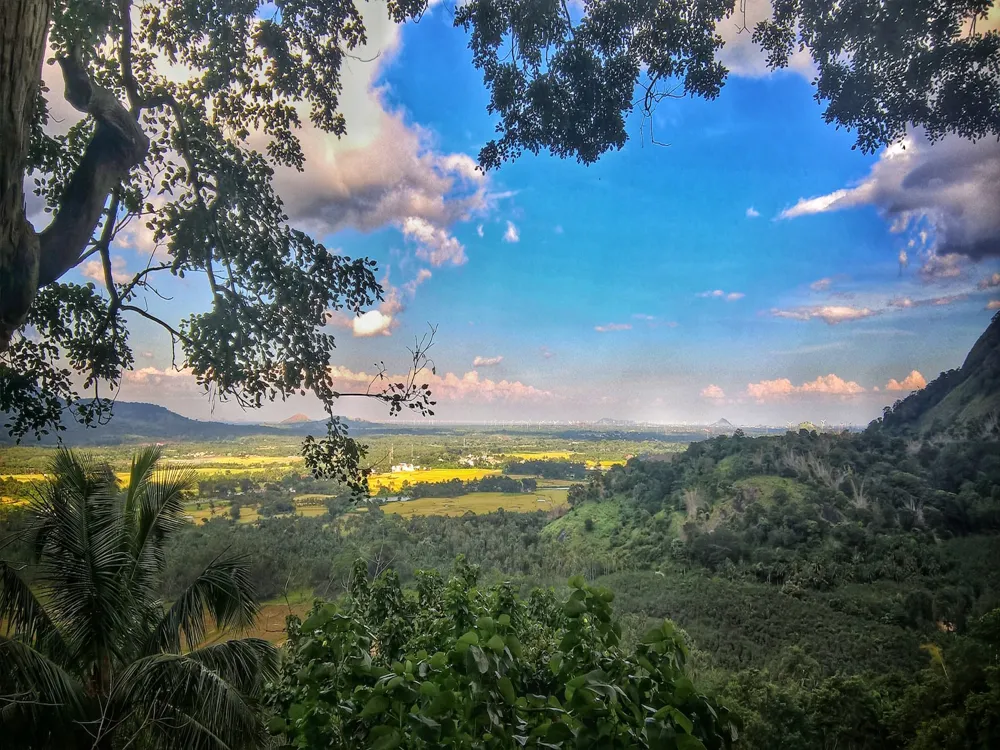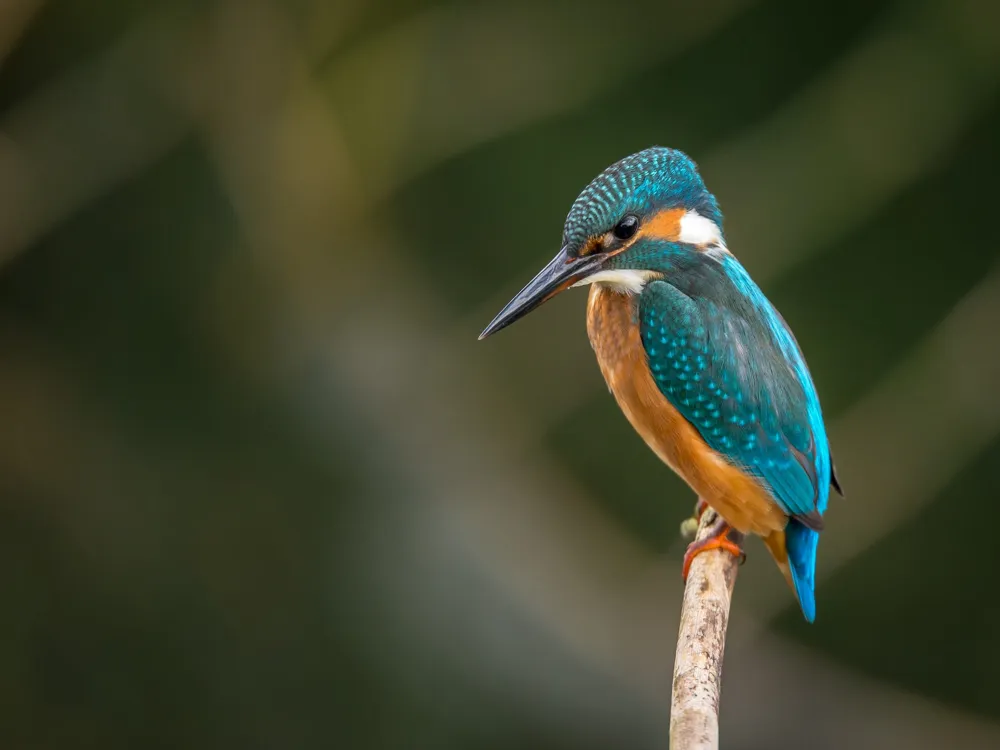The Krishnapuram Palace, a quintessential example of Kerala's rich cultural and architectural heritage, stands as a proud testament to the region's historical significance. Located in the picturesque town of Alleppey, known for its serene backwaters and lush landscapes, the palace is a fascinating destination for history enthusiasts and culture vultures alike. Built in the 18th century during the reign of Marthanda Varma, the Maharaja of Travancore, Krishnapuram Palace is renowned for its unique architectural style that blends traditional Kerala and colonial designs. The palace's layout is a classic example of Kerala's residential architecture, featuring sloping roofs, dormer windows, and narrow corridors. Its gabled roof, wooden ceilings, and thick-framed doors add to its historic charm. One of the most striking features of the palace is the mural, Gajendra Moksham, which is the largest single-band mural found in Kerala. This exquisite piece of art depicts the story of Gajendra, the elephant king, and his devotion to Lord Vishnu. The intricate detailing and vivid colors of the mural continue to mesmerize visitors. Beyond the mural, the palace houses a museum that displays a rich collection of artifacts, including bronze sculptures, ancient inscriptions, coins, megalithic remains, and stone sculptures, offering a glimpse into the region's vibrant past. The palace complex also boasts a beautifully maintained garden, which adds to the aesthetic appeal of the site. Krishnapuram Palace is not just a monument but a narrative in stone and mortar, telling the tales of a bygone era. It's a place where history whispers from every nook and corner, making it a must-visit destination for anyone traveling to Kerala. The architecture of Krishnapuram Palace is a marvel in itself, showcasing the brilliance of Kerala's traditional architectural style mixed with colonial influences. The palace is an epitome of the Kerala style of architecture known as 'ettukettu', which is characterized by its eight-sided layout. This design ensures natural air conditioning and lighting, making the interiors comfortable even during the harsh tropical summers. The palace's exterior is adorned with intricate woodwork and stone sculptures that exemplify the craftsmanship of the era. The walls of the palace are built with laterite, a locally sourced material, and are adorned with lime plaster, which has helped preserve the structure over the centuries. Inside, the palace is a labyrinth of rooms and corridors, each leading to a different part of the palace, revealing a new aspect of its architectural grandeur. The ceilings are made of finely crafted wood and are adorned with floral motifs and traditional designs. The flooring, made of polished stone, reflects the palace's regal past. Perhaps the most fascinating aspect of the palace's architecture is its layout, which is designed according to the principles of Vaastu Shastra, the ancient Indian science of architecture and construction. This not only ensures aesthetic beauty but also brings in positive energy, according to traditional beliefs. The palace also features a traditional pond, which was used for rituals and leisure by the royals. The pond is a fine example of the architectural ingenuity of the time, with its symmetrical design and strategic location within the palace grounds. In essence, the architecture of Krishnapuram Palace is a living testimony to the architectural prowess of ancient Kerala and continues to be a source of inspiration and wonder for architects and historians worldwide. The ideal time to visit Krishnapuram Palace is between November and February when the weather in Kerala is pleasant, making it comfortable to explore the palace and its surroundings. As a mark of respect to the cultural site, it is advisable to dress modestly. Comfortable clothing and footwear are recommended as there's a lot of walking involved. While photography is allowed in certain areas of the palace, some sections may have restrictions. It's best to check with the authorities before taking photographs. Opting for a guided tour can enhance your experience as the guides are knowledgeable about the palace's history and architecture. Before planning your visit, check if the palace is open to the public as it occasionally closes for renovations and maintenance work. Krishnapuram Palace is easily accessible from various parts of Kerala. The nearest airport is Cochin International Airport, which is about 132 kilometers away. From the airport, one can hire a taxi or take a bus to reach the palace. The nearest railway station is Kayamkulam, about 6 kilometers from the palace. Local buses, auto-rickshaws, and taxis are readily available from the railway station. For those driving, the palace is well-connected by road and is a scenic drive through the countryside of Kerala. Read More: Overview of Krishnapuram Palace in Alleppey, Kerala
Architecture of Krishnapuram Palace
Tips When Visiting Krishnapuram Palace
Best Time to Visit
Dress Appropriately
Photography Restrictions
Guided Tours
Check for Renovations
How To Reach Krishnapuram Palace
Krishnapuram Palace
Alleppey
Kerala
₹ 8,999 onwards
View alleppey Packages
Weather :
Tags : Forts & Palaces
Timings : 9:30 AM - 4:30 PM (closed on Monday)
Time Required : 1-2 hours
Entry Fee : Adults: INR 10,
Kids: INR 5,
Still camera: INR 25,
Video camera: INR 250
Built By : King Marthanda Varma
Largest Mural Painting in Kerala : Gajendramoksham - it is in Krishnapuram palace
Planning a Trip? Ask Your Question
Alleppey Travel Packages
View All Packages For Alleppey
Top Hotel Collections for Alleppey

Private Pool

Luxury Hotels

5-Star Hotels

Pet Friendly
Top Hotels Near Alleppey
Other Top Ranking Places In Alleppey
View All Places To Visit In alleppey
Faq on Alleppey
What is Krishnapuram Palace Alleppey famous for?
Krishnapuram Palace in Alleppey is renowned for its architectural brilliance, historical significance, and remarkable mural paintings.
When was Krishnapuram Palace Alleppey built?
Krishnapuram Palace was constructed during the 18th century, in the year 1710, by Anizham Thirunal Marthanda Varma, the ruler of Travancore.
Is there an entry fee to visit Krishnapuram Palace Alleppey?
Yes, there is a nominal entry fee for visiting Krishnapuram Palace. The fee may vary for Indian and foreign tourists.
What are the main attractions inside Krishnapuram Palace Alleppey?
Some of the main attractions within Krishnapuram Palace include the Gajendra Moksha mural, which is the largest mural painting in Kerala, along with its architectural marvels and historical artifacts.
Can visitors take photographs inside Krishnapuram Palace Alleppey?
Yes, visitors are usually allowed to take photographs inside Krishnapuram Palace, but it's advisable to check with the authorities beforehand regarding any specific restrictions.
View alleppey Packages
Weather :
Tags : Forts & Palaces
Timings : 9:30 AM - 4:30 PM (closed on Monday)
Time Required : 1-2 hours
Entry Fee : Adults: INR 10,
Kids: INR 5,
Still camera: INR 25,
Video camera: INR 250
Built By : King Marthanda Varma
Largest Mural Painting in Kerala : Gajendramoksham - it is in Krishnapuram palace
Planning a Trip? Ask Your Question
Alleppey Travel Packages
View All Packages For Alleppey
Top Hotel Collections for Alleppey

Private Pool

Luxury Hotels

5-Star Hotels

Pet Friendly
Top Hotels Near Alleppey
Other Top Ranking Places In Alleppey
Faq on Alleppey
What is Krishnapuram Palace Alleppey famous for?
Krishnapuram Palace in Alleppey is renowned for its architectural brilliance, historical significance, and remarkable mural paintings.
When was Krishnapuram Palace Alleppey built?
Krishnapuram Palace was constructed during the 18th century, in the year 1710, by Anizham Thirunal Marthanda Varma, the ruler of Travancore.
Is there an entry fee to visit Krishnapuram Palace Alleppey?
Yes, there is a nominal entry fee for visiting Krishnapuram Palace. The fee may vary for Indian and foreign tourists.
What are the main attractions inside Krishnapuram Palace Alleppey?
Some of the main attractions within Krishnapuram Palace include the Gajendra Moksha mural, which is the largest mural painting in Kerala, along with its architectural marvels and historical artifacts.
Can visitors take photographs inside Krishnapuram Palace Alleppey?
Yes, visitors are usually allowed to take photographs inside Krishnapuram Palace, but it's advisable to check with the authorities beforehand regarding any specific restrictions.







